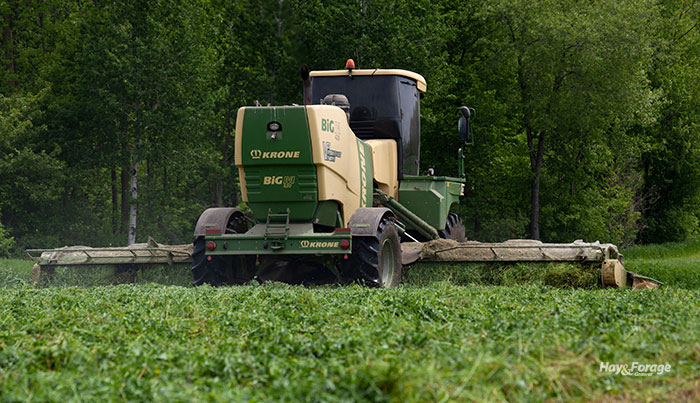
Baring a repeat of 2019, it’s safe to say that a lot of first cutting alfalfa and/or grass will be made during the next month. It’s probably a good time to emphasize the fact that first cutting, more than any other, usually defines the success of the forage-making year.
Here are seven reasons why first cutting is different and more important than any other.
1. No cutting experiences the possible range in environmental conditions that first cutting does. It can be cool and wet, cool and dry, hot and wet, or hot and dry. This potential range in growing environment has a profound impact on both forage growth and nutritive quality from year to year.
2. Fiber digestibility usually takes a wild ride during the course of spring forage growth. When cut on time, first-cut neutral detergent fiber digestibility (NDFD) can be, and often is, higher than any other cutting of the season (thank the early cool temperatures). Even small improvements in fiber digestibility can make for large differences in milk production.
3. Although first cutting offers the opportunity for harvesting forage with the highest digestible fiber of the growing season, forage quality declines at a faster rate for first cut compared to subsequent cuttings. This presents the possibility of also harvesting large quantities of very poor, low-digestible forage once maturity advances beyond alfalfa bud stages.
This downhill ride in forage quality is accelerated by warming temperatures. It also becomes more dramatic if grass is present in the stand.
4. Given the first three factors, the need to estimate first-cut forage quality as it stands “on the hoof” becomes a necessity if forage quality train wrecks are to be avoided. Attempts to gauge forage quality solely by either maturity stage or calendar date have proved inconsistent at best, or a total failure at worst. Spring growing conditions are simply too variable.
Predictive equations for alfalfa quality (PEAQ), growing degree day tracking, or clipping fresh forage for analysis are useful tools for estimating first-cut forage quality.
5. First cutting also has some unique yield characteristics. Spring alfalfa growth almost always provides the highest percentage of total-season dry matter yield. The economic consequences of making a first-cut timing mistake are higher than for any other cutting because there is usually more forage than any other cutting.
Similar to forage quality, changes in initial spring growth occur more rapidly for yield than for summer and fall growth cycles. Growing environment will dictate the rate of dry matter accumulation per acre, which can approach 100 pounds per acre per day.
6. First-cut timing sets the pace for the rest of the growing season. In other words, the first cut harvest date may dictate how many future cuttings will be taken, the interval between those cuttings, and/or how late into the fall the last cutting will be harvested.
First cutting is the only one of the year when there is no number of days since the previous harvest. The decision options are wide open, but the consequences of the decision impact the rest of the season.
7. Finally, after suffering through months of snow, mud, and putting on long underwear, it’s time to make hay. This is perhaps the best unique thing about first cutting.

